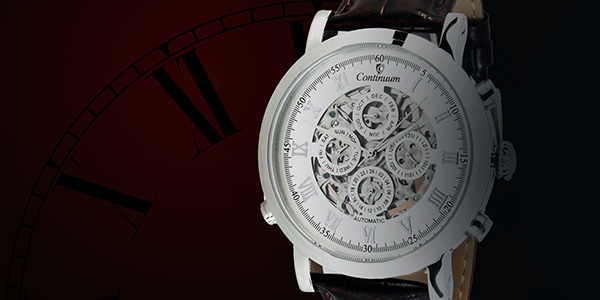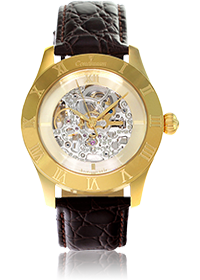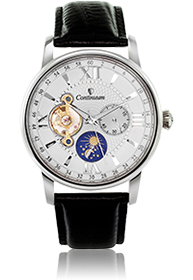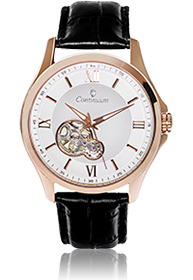
MOVEMENTS


Basically one can distinguish between mechanical movements and quartz movements. Mechanical movements can either operate in a fully automatic way or via manual winding. No electrical energy source is required in order to keep the watch running. Basically a distinction is made between watches with a manually wound up system and an oscillation system. Though the two systems differ in the type of energy they utilise, they both work without electricity. Mechanical watches are also called automatic watches and for many collectors and connoisseurs they are an expression of true watchmaking arts. Watches with a skeletonised dial are perceived as particularly elegant, as they reveal the diligently working movement at the heart of the watch.
In the year 1927 the first quartz movement was developed. However, only 30 years later, the first quartz wrist watches were designed and built in Switzerland. A quartz movement is a very special construct. Each quartz movement has a wafer-thin synthetic quartz element, which is referred to as the oscillator. The movement in a quartz watch uses the oscillator's vibrations as an energy source. Quartz movements are among the most precise movements in the world of time measuring instruments. Thus, they guarantee an exact determination of time over many years.
SELF-WINDING SYSTEMS
Inside automatic watches there is a spring which serves as the movement's energy storage. This spring winds up automatically as a result of the movements made while wearing the watch. When moving around the ball-bearing mounted rotor, to which the spring is connected, stops in its tracks due to its weight and mounting. This generates a turning moment which is used to wind up the spring. A slipping clutch, also referred to as bridge, prevents the spring from overstretching. Given that an automatic watch is worn regularly, it becomes a impressively reliable and precise time measuring instrument.
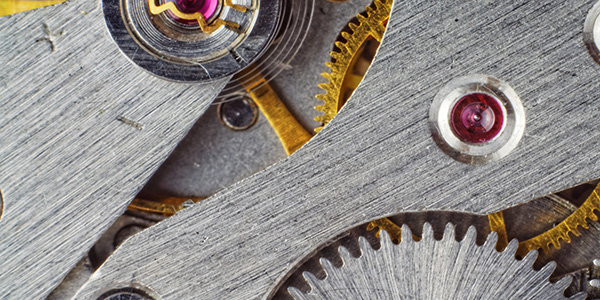
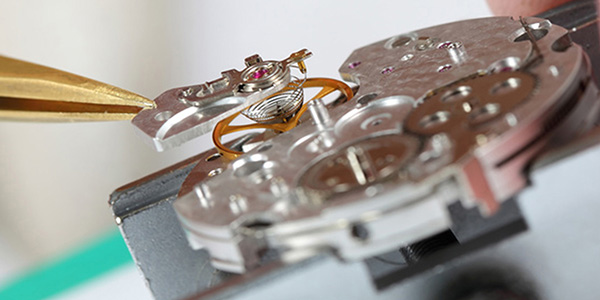
HAND-WINDING SYSTEMS
As the name suggests, watches which run with hand winding systems need to have their mainspring manually wound up in order for the watch to keep going. In the early days the winding was done with the help of a small key. Later the key got replaced with the winding crown. This type of watches does not have to be constantly moved around to keep functioning. All it takes are a few rotations of the crown to set the watch hands in motion again. The main advantage of these watches is that they are ready to accompany you even if you haven't worn them in a while.
CHRONOGRAPH
Technology-wise, chronographs are true works of art. They make it possible to simultaneously measure several time periods. Chronographs are increasingly used at major sports events to measure the performances of athletes. For this purpose, these special timepieces are equipped with additional indicators to measure hours, minutes and seconds. Among the most accurate chronographs are those which are able to display stopping times within tenths of a second. Despite this diversity in functions the watches are very easy to use: To start and stop the stopwatch you press the upper button. You can add time measurements by repeatedly pressing the start/stop button. In case you want to measure longer periods of times, you can read the elapsed time from the respective chronograph displays. Finally, reset all your measurements by pressing the bottom button.

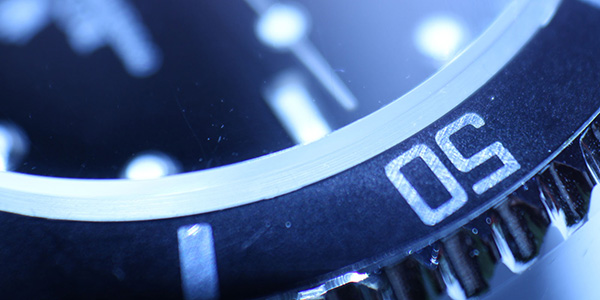
CHRONOMETER
A chronometer is a watch with an above-average accuracy. Highest precision, constant inspections and quality controls during the manufacturing process are necessary to produce such special timepieces. A time measuring instruments can only be referred to as chronometer if it has proven its accuracy under certain, well-defined, internationally standardised conditions. If those conditions are met, a certificate is issued by a special agency. In the early days chronometers were used by sailors to calculate the coordinates of their ship's location on sea as precisely as possible.
MULTIFUNCTION MOVEMENTS
A multifunction movement is, as the term already suggests, a movement that is equipped with multiple functions. Besides the obvious one, namely the measuring of time, you are provided with additional information, such as the current date, weekday, moon phase and 24 h time format. Technically chronographs can also be referred to as multifunction watches as they also function as stop watch. These watches are true multitaskers and thus they are valued for their high functionality and practicality.
